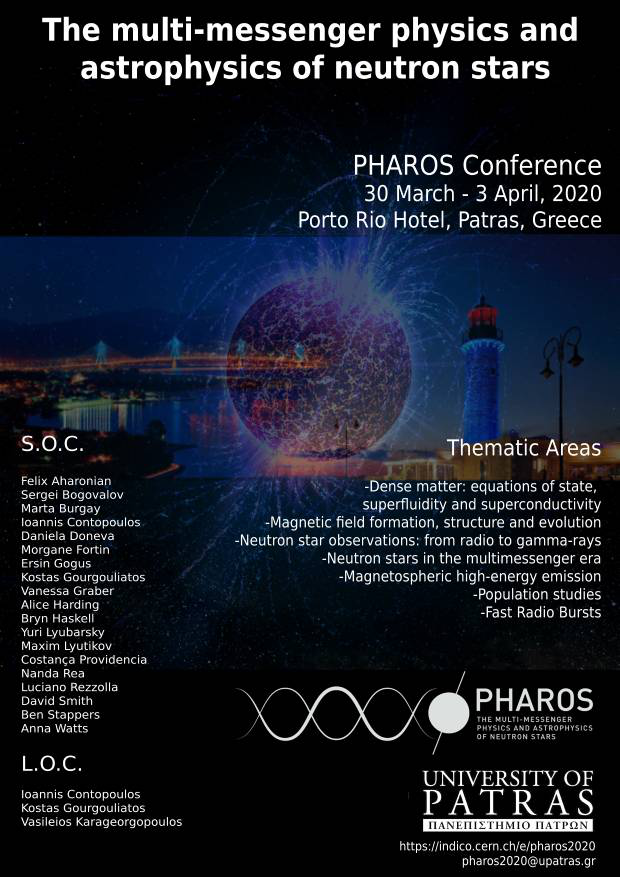Speaker
Description
Despite 40 years of intensive study, the detailed mechanism for sudden increases in the spinning of neutron stars (known as glitches) remains a puzzle. It is believed that glitches are a direct manifestation of superfluidity in the stellar interior. One of the sources of the difficulty of modeling neutron stars is that the scales vary within many orders of magnitude. At the microscale one can construct models where neutrons and protons are the degrees of freedom. On the mesoscopic scale, glitches can be modeled by a semi-classical vortex filament model (VFM) in which impurities and vortices are the degrees of freedom. On the scale of the whole star, the hydrodynamical methods are utilized. It is not fully clear how the effective description emerges from the more fundamental one.
We use microscopic description to provide a solid underpinning of the so-called vortex filament model, the mesoscopic approach used to model vortex dynamics in neutron star crust. From fully microscopic simulations, employing Time-Dependent Density Functional Theory (TDDFT), it is possible to extract various parameters of the filament model, including vortex-impurity interactions and dissipation coefficients. For microscopic TDDFT calculations, we use BSk type energy density functional, which is a very accurate nuclear functional designed to agree with existing astrophysical constraints. Using this state-of-the-art functional we try to narrow down the range of values of parameters of VFM which may also affect, in principle, the parameter space of hydrodynamical models. Here, I will present the properties of a vortex in superfluid neutron matter.

